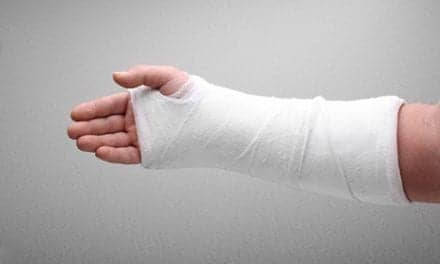Infusion of cells from a child’s own umbilical cord blood appears to improve the brain connectivity and motor function in children with spastic cerebral palsy, according to results from a randomized clinical trial.
The study, performed by researchers from Duke University Medical Center and published recently in Stem Cells Translational Medicine, included 63 children with varied types and severities of spastic cerebral palsy.
Children who received one intravenous dose of at least 25 million stem cells per kilogram of their body weight saw improvements in motor function a year later. The improvements were greater than those typically observed for children of similar age and condition, and exceeded the gains made by children who received a lower dose of cells or a placebo, explains a media release from Duke University Medical Center.
“We are encouraged by the results of this study, which shows that appropriately dosed infusions of cord blood cells can help lessen symptoms in children with cerebral palsy,” says senior author Joanne Kurtzberg, MD, director of Duke’s Pediatric Blood and Marrow Transplant Program and the Robertson Clinical and Translational Therapy Program, in the release.
“We still have a lot to learn about this therapy so that it can be optimized and accessible to more children with cerebral palsy,” adds Kurtzberg, who is also director of the Carolinas Cord Blood Bank at Duke.
In the study, Kurtzberg and her research team tested doses from 10 million cells per kilogram of body weight up to 50 million cells per kilogram, based on the amount and quality of the cord blood each child had in storage. Among the tools used to evaluate the children’s progress were MRI to measure brain connectivity and the Gross Motor Function Measure (GMFM-66), a standardized analysis of a child’s ability to crawl, roll, kneel, and complete other movements based on age and development.
Children who have cerebral palsy are expected to gain motor function as they grow and develop and receive traditional therapies, including occupational and physical therapy, says Jessica Sun, MD, a pediatric hematologist-oncologist at Duke and the study’s lead author.
The GMFM-66 attempts to account for this expected growth based on age and the severity of the cerebral palsy, she adds, and most participants improved when retested on the GMFM-66 a year after receiving an infusion, even those who received a placebo.
However, the improvements for children who received doses of at least 25 million cells per kilogram of body weight progressed beyond their expected increases when they were tested a year after infusion, the release continues.
“For each child, the improvements are different and could be subtle, but sometimes even a seemingly small difference is significant,” Sun points out. “For example, a child’s ability to turn their hand from facing down to facing up can change their ability to hold or grasp something, which can make a big difference in their everyday life.”
The study had some limitations, including the requirement that participants have cord blood in storage and be able to travel to Duke, both of which required financial means, according to the study authors. Being from well-resourced families, most participants were also receiving frequent physical and occupational therapy, Sun states, and those advantages could have influenced the results.
“We are hopeful that cord blood and cell therapy may have a role in treating children with cerebral palsy and brain injury, and are encouraged to continue this promising research,” Sun concludes.
[Source(s): Duke University Medical Center, Science Daily]





